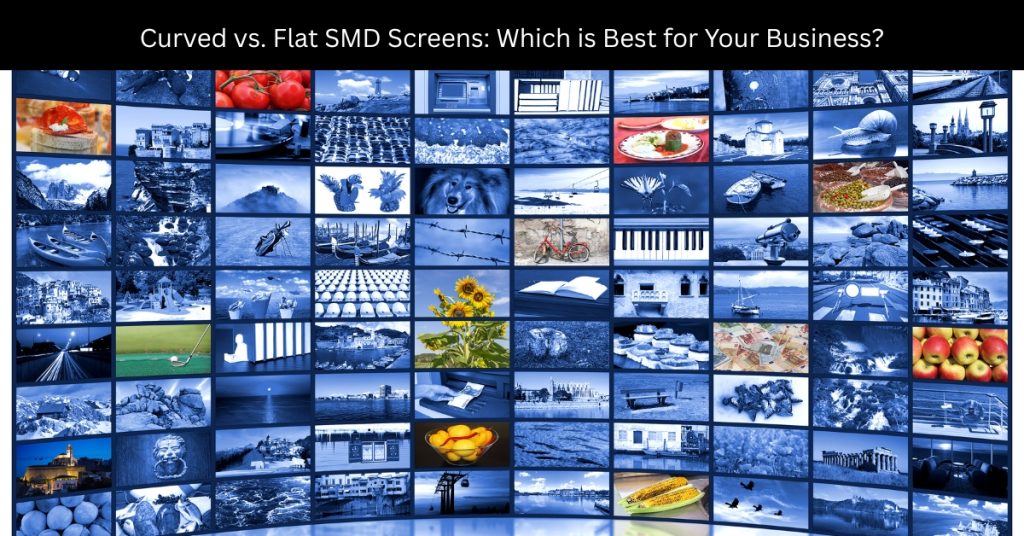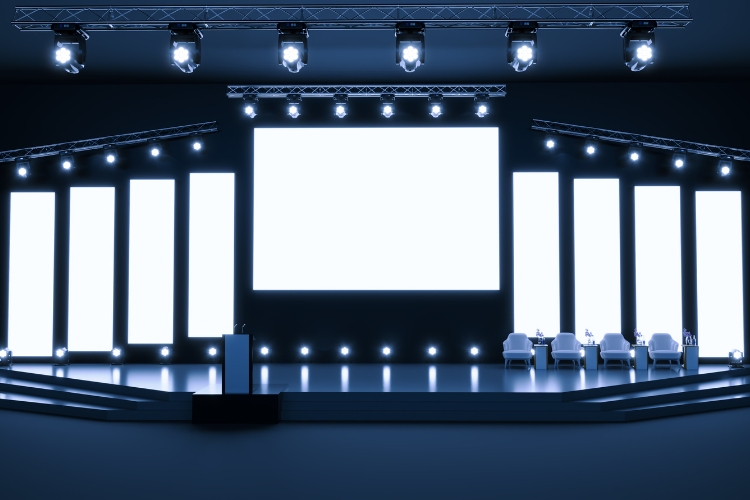The digital signage landscape is rapidly evolving, with businesses facing critical decisions about display technology investments.
This blog article explores the fundamental differences between curved and flat SMD screens, helping Pakistani businesses navigate the complex choice between immersive curved LED displays and traditional flat configurations.
With curved display technology gaining momentum in Pakistan’s major cities and flat screens maintaining their cost-effective reliability, understanding the unique advantages, applications, and ROI implications of each option becomes essential for making informed business decisions.
Whether planning a retail installation, corporate presentation space, or entertainment venue, this analysis provides the insights needed to choose the display solution that best aligns with your business objectives and budget constraints.
Key Takeaways!
| Aspect | Curved SMD Screens | Flat SMD Screens |
|---|---|---|
| Best For | Immersive experiences, premium retail, entertainment venues | Cost-effective communication, functional signage, corporate environments |
| Investment Level | 20-40% higher initial cost | Standard pricing, budget-friendly |
| Visual Impact | Superior engagement, wraparound immersion | Reliable, clear presentation |
| Content Requirements | May need specialized content creation | Compatible with existing standard content |
| Installation | Requires specialized mounting and expertise | Standard installation procedures |
| Ideal Applications | Showrooms, lobbies, gaming centers, high-end retail | Offices, restaurants, informational displays, menu boards |
| ROI Focus | Experience-driven revenue through engagement | Cost-efficiency and reliable operation |
| Future-Proofing | Cutting-edge technology with growth potential | Mature, proven technology with ongoing improvements |
Understanding SMD Screen Technology
SMD screens represent the cutting edge of LED display technology, utilizing surface-mounted LED components that deliver exceptional brightness, color accuracy, and energy efficiency. Unlike traditional displays, SMD technology allows for closer viewing distances while maintaining crystal-clear image quality, making them ideal for both indoor and outdoor applications.
The manufacturing process involves mounting LED chips directly onto the circuit board surface, creating a more compact and reliable display solution. This technology has revolutionized the digital signage industry by offering superior performance characteristics including higher resolution capabilities, better heat dissipation, and longer operational lifespans compared to conventional LED displays.
For businesses considering digital signage investments, understanding SMD technology forms the foundation for making educated decisions about display configurations. Whether you choose curved or flat configurations, SMD technology ensures your investment delivers consistent, high-quality visual performance that meets modern consumer expectations.
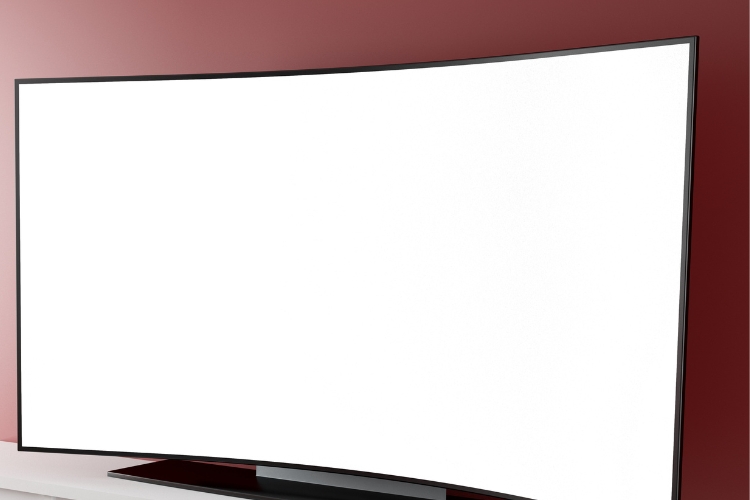
The Rise of Curved LED Displays in Pakistan
Pakistan’s digital advertising market has witnessed tremendous growth, with curved LED display Pakistan installations becoming increasingly popular across major cities like Karachi, Lahore, and Islamabad. This trend reflects a global shift toward more engaging, immersive signage solutions that capture attention in crowded urban environments.
Local businesses have discovered that curved displays offer unique advantages in Pakistani market conditions, particularly in high-traffic areas where competition for consumer attention is intense. Shopping malls, corporate offices, and entertainment venues are increasingly adopting curved display technology to create memorable visual experiences that differentiate their brands.
The growing availability of curved display solutions from both international and local suppliers has made this technology more accessible to Pakistani businesses across various sectors. Government initiatives supporting digital infrastructure development have further accelerated adoption rates, creating new opportunities for businesses to leverage advanced display technologies.
Curved SMD Screens: Advantages and Applications
1. Enhanced Visual Impact and Immersion
Curved SMD screens create a natural viewing experience that closely mimics human peripheral vision, resulting in significantly improved immersive signage capabilities. The curved geometry draws viewers into the content, creating a sense of depth and engagement that flat displays simply cannot match.
This enhanced immersion proves particularly valuable for retail environments, where capturing and maintaining customer attention directly impacts sales performance. Entertainment venues, conference rooms, and exhibition spaces benefit enormously from the wraparound effect that curved displays provide, creating memorable experiences that leave lasting impressions on audiences.
The psychological impact of curved displays cannot be understated – viewers perceive curved content as more dynamic and engaging, leading to increased dwell time and improved message retention rates. This translates directly into better return on investment for businesses utilizing curved display technology in their marketing strategies.
2. Optimal Viewing Angles and Reduced Distortion
Traditional flat displays often suffer from viewing angle limitations, where image quality degrades when viewed from the sides. Curved SMD screens address this challenge by maintaining consistent image quality across a wider viewing arc, ensuring that content remains clear and vibrant regardless of the viewer’s position.
This characteristic makes curved displays ideal for large spaces where audiences may be positioned at various angles relative to the screen. Auditoriums, retail showrooms, and public gathering spaces particularly benefit from the uniform viewing experience that curved displays provide.
The reduced edge distortion inherent in curved designs ensures that content appears natural and proportional from all viewing positions, eliminating the stretching effects commonly associated with wide flat displays. This results in more professional presentations and more effective communication of visual content.
3. Space Efficiency and Architectural Integration
Curved displays often integrate more seamlessly into architectural environments, following natural sight lines and complementing building curves or design elements. This integration capability allows businesses to maximize visual impact while maintaining aesthetic harmony within their spaces.
The ability to wrap around corners or follow curved walls provides significant space utilization advantages, particularly in premium retail locations where every square foot of display area represents substantial value. Curved configurations can create continuous visual experiences that guide customer flow and enhance spatial navigation.
Modern curved SMD screens are available in flexible SMD screen configurations that can be customized to match specific architectural requirements, providing unprecedented design flexibility for creative installations. This adaptability makes curved displays suitable for unique spaces that would be challenging to serve with traditional flat displays.
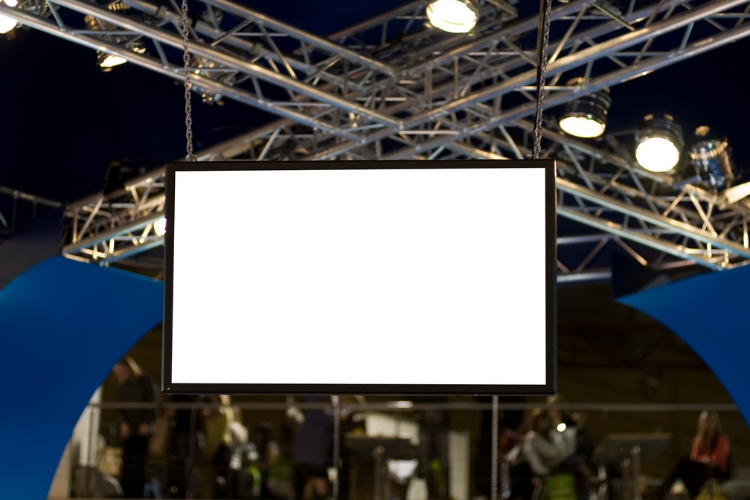
Flat SMD Screens: Traditional Excellence
1. Cost-Effectiveness and Simplicity
Flat SMD screens remain the gold standard for cost-conscious businesses seeking reliable, high-quality display solutions without premium pricing. The mature manufacturing processes for flat displays result in more competitive pricing structures, making them accessible to businesses across all budget ranges.
Installation and maintenance requirements for flat displays are typically straightforward, reducing both initial setup costs and ongoing operational expenses. This simplicity makes flat screens particularly attractive for businesses that prioritize reliable operation over cutting-edge visual effects.
The established supply chains and technical support networks for flat displays ensure consistent availability and service support, critical factors for businesses that depend on continuous display operation for their daily activities.
2. Versatility and Content Compatibility
Flat displays offer unmatched versatility in content presentation, seamlessly handling everything from simple text displays to complex multimedia presentations. The rectangular format aligns perfectly with standard content creation workflows and existing media assets, minimizing content adaptation requirements.
Video content, presentations, and standard digital signage materials are optimized for flat display formats, ensuring that businesses can leverage existing content libraries without expensive reformatting or redesign processes. This compatibility advantage significantly reduces the total cost of ownership for flat display installations.
The standardized aspect ratios of flat displays simplify content management and scheduling processes, allowing businesses to maintain consistent visual branding across multiple display locations without complex content adaptation requirements.
3. Proven Reliability and Performance
Decades of development and real-world deployment have refined flat SMD screen technology to exceptional reliability standards. The predictable performance characteristics and well-understood maintenance requirements make flat displays ideal for mission-critical applications where downtime is unacceptable.
The extensive track record of flat displays in various environmental conditions provides confidence for businesses planning long-term installations. Weather resistance, thermal management, and component longevity have been thoroughly tested and proven across countless installations worldwide.
Technical support and replacement part availability for flat displays are comprehensive, ensuring that businesses can maintain their investments effectively throughout the expected operational lifecycle.
Comparative Analysis: Key Decision Factors
| Factor | Curved SMD Screens | Flat SMD Screens |
|---|---|---|
| Initial Investment | Higher upfront costs | Lower upfront costs |
| Visual Impact | Superior immersion and engagement | Standard but effective presentation |
| Installation Complexity | Requires specialized mounting | Standard installation procedures |
| Content Adaptation | May require specialized content | Compatible with standard content |
| Viewing Angles | Excellent from all positions | Good within optimal range |
| Maintenance Requirements | Specialized service knowledge | Standard maintenance procedures |
| Space Integration | Excellent architectural integration | Versatile placement options |
| Energy Efficiency | Variable based on curvature | Optimized for standard applications |
Industry-Specific Applications and Recommendations
1. Retail and Commercial Spaces
Retail environments benefit significantly from curved displays when the goal is creating immersive brand experiences that encourage customer engagement and extended shopping sessions. High-end fashion boutiques, electronics showrooms, and automotive dealerships find that curved displays enhance product presentation and create premium brand perceptions.
However, flat displays remain optimal for informational signage, price displays, and menu boards where content clarity and cost-effectiveness take priority over visual drama. Supermarkets, quick-service restaurants, and utility-focused retail spaces typically achieve better return on investment with flat display solutions.
The decision often depends on the specific role of digital signage within the retail strategy – experiential marketing favors curved displays, while functional communication benefits from flat displays.
2. Corporate and Professional Environments
Corporate boardrooms and presentation spaces can leverage curved displays to create more engaging meeting environments that improve participant attention and information retention. The immersive characteristics of curved displays can enhance video conferencing experiences and collaborative presentations.
Traditional office environments typically benefit more from flat displays for everyday communication needs, including announcements, wayfinding, and informational content. The cost-effectiveness and reliability of flat displays align better with standard corporate budget constraints and practical requirements.
Professional service firms should consider their client interaction patterns when choosing display technology – client-facing areas may justify curved display investments, while internal communication areas are well-served by flat displays.
3. Entertainment and Hospitality
Entertainment venues, including cinemas, gaming centers, and theme parks, represent ideal applications for curved display technology. The enhanced immersion capabilities directly support the entertainment value proposition, justifying higher investment costs through improved customer experiences.
Hotels and restaurants can strategically deploy curved displays in lobby areas and signature spaces where creating memorable impressions drives repeat business and word-of-mouth marketing. However, functional areas like registration desks and service counters typically benefit more from reliable flat displays.
The hospitality industry’s focus on customer experience makes curved displays particularly valuable for creating distinctive brand impressions that differentiate properties in competitive markets.
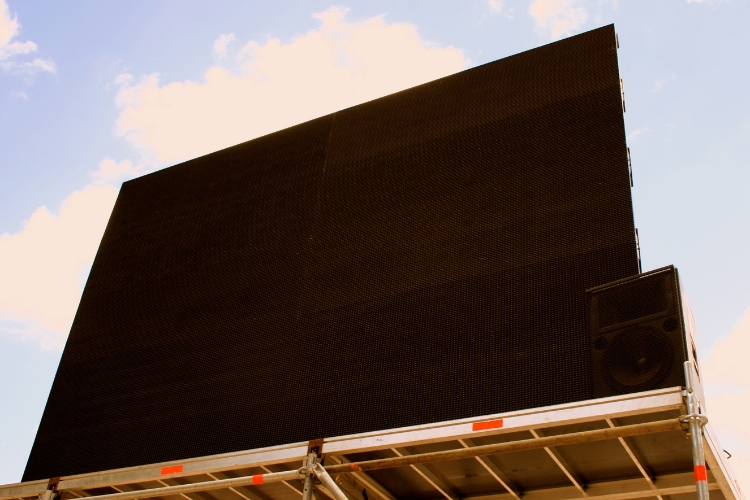
Cost Considerations and ROI Analysis
1. Initial Investment and Total Cost of Ownership
Curved SMD screens typically require 20-40% higher initial investment compared to equivalent flat displays, primarily due to specialized manufacturing processes and custom mounting requirements. However, this premium should be evaluated against the potential for increased customer engagement and revenue generation.
The total cost of ownership includes installation complexity, content creation requirements, and maintenance considerations. Curved displays may require specialized technical support and custom content development, factors that should be included in comprehensive budget planning.
Businesses should conduct detailed ROI analysis based on their specific applications, considering factors such as increased foot traffic, extended customer engagement times, and premium pricing opportunities that curved displays might enable.
2. Long-term Value and Future-Proofing
The rapidly evolving display technology landscape makes future-proofing considerations crucial for substantial investments. Curved display technology represents the direction of industry development, potentially offering better long-term value as the technology matures and costs decrease.
However, flat displays continue to evolve with improvements in resolution, energy efficiency, and reliability, ensuring that they remain viable long-term investments for many applications. The established infrastructure and support systems for flat displays provide confidence in long-term operational viability.
Businesses should align their technology choices with their strategic planning horizons – short-term focused organizations may prefer flat displays, while those planning for extended market positioning might benefit from curved display investments.
Making the Right Choice for Your Business
The decision between curved and flat SMD screens ultimately depends on your specific business objectives, budget constraints, and application requirements. Curved displays excel in situations where creating memorable experiences and maximum visual impact justify higher investments, while flat displays provide reliable, cost-effective solutions for functional communication needs.
Consider your target audience expectations, competitive positioning requirements, and long-term business strategy when evaluating display technology options. The most successful digital signage investments align display capabilities with clearly defined business objectives and measurable performance criteria.
Pakistani businesses have access to both curved LED display Pakistan solutions and traditional flat displays through established suppliers and integrators. The key to success lies in matching display technology capabilities with specific business requirements rather than simply choosing the most advanced available option.
Whether you choose curved or flat SMD screens, focus on partnering with experienced suppliers who can provide comprehensive support throughout the installation and operational phases. The right display technology, properly implemented and maintained, will serve as a valuable business asset that enhances customer experiences and supports your marketing objectives for years to come.
The future of digital signage continues to evolve, with both curved and flat display technologies advancing rapidly. By understanding the unique advantages and applications of each approach, you can make informed decisions that position your business for success in an increasingly competitive marketplace where visual communication plays a crucial role in customer engagement and business growth.
FAQs
1. What is the cost difference between curved and flat SMD screens in Pakistan?
Curved SMD screens typically cost 20-40% more than equivalent flat displays due to specialized manufacturing and custom mounting requirements. While the initial investment is higher, curved displays can generate better ROI in applications focused on customer experience and engagement. Flat screens remain the most cost-effective option for functional signage needs, offering reliable performance at competitive prices with established local supply chains and service support.
2. Which type of SMD screen is better for retail businesses?
The choice depends on your retail strategy and budget. Curved displays excel in high-end retail environments like fashion boutiques, electronics showrooms, and automotive dealerships where creating immersive brand experiences drives sales. They’re ideal for experiential marketing that encourages customer engagement. Flat displays work better for practical retail applications like supermarkets, quick-service restaurants, and informational signage where content clarity and cost-effectiveness are priorities.
3. Are curved LED displays more difficult to maintain than flat screens?
Curved displays require specialized technical knowledge for maintenance and may need custom service approaches due to their unique design. However, modern curved SMD screens are built with reliability in mind and don’t necessarily break down more frequently. Flat displays benefit from widespread service networks and standardized maintenance procedures, making them easier and less expensive to service. Consider local technical support availability when making your decision.
4. Can existing content be used on curved SMD screens without modification?
Standard rectangular content can be displayed on curved screens, but may not utilize the full immersive potential of the curved format. For optimal visual impact, content should be created or adapted specifically for curved displays to take advantage of the wraparound effect. Flat displays seamlessly handle all existing content formats without modification, making them ideal for businesses with extensive existing content libraries or standardized corporate communications.

